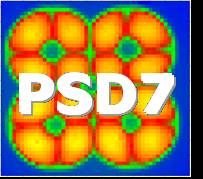Speaker
Dr
Fred Ruddell
(Northern Ireland Semiconductor Research Centre)
Description
There are a number of position sensitive detector applications where
there is a requirement for an imaging device which has enhanced
response in the near infra-red spectrum (0.77µm to 1.5µm). Although
infra-red detectors are fabricated using III-V and HgCdTe materials,
integration with silicon readout circuitry is not easily achievable,
often relying on bump-bonding technology. Germanium (Ge) is
compatible with silicon device technology, and is once again
becoming a mainstream semiconductor material. A Ge detector will
exhibit a high quantum efficiency at all wavelengths from ultra-
violet up to near infra-red, and is thus highly desirable for multi-
spectral imaging and image fusion applications.
Fabrication of an electrically stable dielectric is a key enabling
technology in the production of a Ge detector. This work
investigates the use of atmospheric pressure CVD (APCVD) silicon
dioxide (SiO2) deposited on Ge at 400oC using SiH4, O2 and N2 source
gases. After deposition the SiO2 layers were densified at 800oC for
10 minutes in N2. To study the electrical properties of the Ge-SiO2
interface MOS capacitors have been fabricated on p-type 2-cm Ge
substrates, using a dielectric thickness of 170nm. Analysis of
these characteristics reveals a satisfactory oxide surface-state
charge (Qss) of 1.7x1011cm-2, a flat-band voltage (Vfb) of -1.77V,
and a threshold voltage (Vth) of -0.60V. The DC leakage current
density through the Ge MOS capacitors is less than 2x10-11Acm-2 for
applied voltages between –5V and +5V, thus verifying the insulating
properties of the dielectric.
At a frequency of 10kHz the capacitance measured in strong inversion
approaches that of the dielectric alone. This 'low frequency' mode
of operation occurs at a frequency approximately three orders of
magnitude higher than would be observed for a Si MOS capacitor, and
is due to the increased charge generation rate in the narrower
bandgap Ge substrate. SIMS analysis of the APCVD SiO2 after
densification at 800oC shows that significant Ge outdiffusion from
the substrate into the dielectric layer has occurred. For
comparison, results from Ge MOS capacitors incorporating APCVD SiO2
layers densified at 600oC, and dielectrics deposited using plasma
enhanced CVD (PECVD) will be presented. The effect of 450oC forming
gas (H2/N2) post-metal anneals on the capacitor characteristics will
also be discussed.
Primary author
Dr
Fred Ruddell
(Northern Ireland Semiconductor Research Centre)




